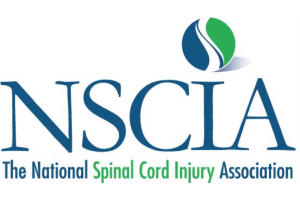Norovirus Gastroenteritis
Overview of the Norovirus Pathogen and Viral Gastroenteritis
Norovirus is a significant cause of food poisoning, waterborne illness, and recreational water illness in this country. In fact, Norovirus is the leading cause of foodborne illness in the United States. Noroviruses (also known as Norwalk virus) are a highly contagious related group of viruses which can infect and severely inflame the gastrointestinal tract of humans thereby causing an illness known as acute viral gastroenteritis. This illness is sometimes called the “stomach flu” although Norovirus is not related to the influenza virsues. Norovirus infections are responsible for an estimated 21 million new cases of gastroenteritis in the United States every year. Indeed, Norovirus is the leading cause of viral gastroenteritis, accounting for about one-half of all such illnesses. According to the U.S. Centers for Disease Control & Prevention (CDC), about one in every fifteen Americans becomes sick with Norovirus each year. The CDC also estimates that Norovirus infections cause at least 500 deaths and 70,000 hospitalizations in this country annually.
Norovirus gastroenteritis is a self limiting disease usually lasting one to six days and resolving without complication. The illness is often associated with the rapid onset of its primary symptoms: nausea, vomiting, non-bloody diarrhea, loss of appetite and abdominal pain / cramping. Less frequently, headache, muscle aches and low grade fever may also occur. Noroviruses have a relatively short incubation period so symptoms usually begin with 12-48 hours of exposure to the virus. Learn more about other Types of Foodborne Illnesses.
Making a Diagnosis of Gastroenteritis Due to Norovirus
Gastroenteritis is considered to be a non-specific medical term describing the inflamed and irritated state of a patient’s digestive tract. In most cases, physicians and other healthcare professionals make a clinical diagnosis of gastroenteritis based upon the presenting symptoms without having objective pathological evidence as to its cause. In addition to Norovirus, gastroenteritis can be caused by various other foodborne and waterborne pathogens. Because various viral and bacterial agents can cause acute gastroenteritis, the diagnosis of this disease is often made without identification of the particular infectious organism responsible for causing it. However, Noroviruses can be isolated in human feces so stool samples can be tested to support a definitive diagnosis of acute gastroenteritis due to Norovirus infection. Stool samples taken during the acute phase of the illness yield the best results, but Norovirus can sometimes still be detected 1-2 weeks after symptoms have subsided.
The Causes and Spread of Norovirus Gastroenteritis
Norovirus is a significant cause of food poisoning and recreational water illness because it is highly infectious and humans need only ingest a very small number of the microorganisms to become infected. Transmission usually occurs via consumption of food or water contaminated with the pathogen. Norovirus resides in the stool and vomit of infected humans. Therefore, any food or water which comes in contact with human feces or vomit can become contaminated. Norovirus contamination can occur at any point while food is being grown, harvested, stored or prepared. Also, Norovirus is very hardy and can survive for days or weeks on unsanitized surfaces, utensils and equipment handled by an infected person. Thus, contamination of food can occur when it is prepared on or with surfaces, utensils or equipment where Norovirus may be present. Various studies indicate that foodborne transmission is a primary cause of Norovirus gastroenteritis. In a 2011 report, the CDC estimated that Norovirus results in nearly 5.5 million foodborne related illnesses in the U.S. each year, and that these cases of food poisoning cause nearly 15,000 hospitalizations and 150 deaths.
Noroviruses are communicable and person-to-person transmission can take place via the fecal-oral route after (a) direct contact with an infected person, (b) contact with countertops, door knobs, utensils, mops, sponges, rags or other fomites previously used by an infected person, and (c) contact with an area where the vomit or diarrhea of an infected person has been aerosolized (i.e., dispersal of very small particles into the air). Person-to-person transmission of Norovirus does not occur via the respiratory route, meaning that it is not spread by the breathing, coughing or sneezing of an infected person. It should be noted that not all persons infected with Norovirus become sick or exhibit any symptoms. Many remain asymptotic and unaware that they have become infected. Moreover, Norovirus can be shed in the stool of someone for several weeks after diarrhea has resolved. Thus, infected persons who are asymptomatic or whose symptoms have ended (or not yet begun) are capable of contaminating food or spreading their infection to other individuals.
Prevention of Food Poisoning and Illnesses Due to Norovirus
Adequate hand hygiene is considered the most important means of preventing the spread of Norovirus. It is critical that every food handler always properly wash their hands before preparing or serving food to others. In addition, all persons should wash their hands before eating, and after using the bathroom, changing a diaper, caring for someone with diarrhea or cleaning any area where someone has vomited. Also, no persons suspected of having a Norovirus infection or who have diarrhea or other symptoms of gastroenteritis should be allowed to participate in the preparation or service of food to others while they are sick and during the two week period following their illness. Restaurants and other food service locations should routinely sanitize all food prep counters, utensils, cooking equipment and environmental surfaces with an effective chlorine based disinfectant or other solution approved by the EPA. Sufficient heat will inactivate Norovirus so adequate cooking and keeping foods properly heated is also important. This explains in part why Norovirus is often associated with salads, cold sandwiches, raw fruits and vegatables, raw oysters and other raw shellfish.
Outbreaks of Gastroenteritis Due to Norovirus
Norovirus is both a foodborne and waterborne pathogen, and has been associated with many outbreaks of epidemic gastroenteritis involving contaminated food, drinking water, and pool water at amusement parks and other aquatic venues. Norovirus outbreaks involving person-to-person spread have also occurred in hospitals, nursing homes, daycare centers, college dormitories, cruise ships and other community settings where people are confined or reside together in close quarters. The CDC reports that during years 1994-2006, there were 660 confirmed outbreaks of Norovirus in the United States. Because many are never reported to or investigated by the CDC, the actual number of Norovirus outbreaks was much higher during this period. Most of these confirmed outbreaks of Norovirus occurred in healthcare facilities (35%), restaurants / catered events (31%), cruise ships / vacation resorts (20%), and schools / daycare centers (13%).
According to the CDC, “Norovirus is recognized as the leading cause of foodborne-disease outbreaks in the United States.” The most recent data compiled by the CDC shows that Norovirus was responsible for nearly half of all illnesses which were part of a reported food poisoning outbreak. Foodborne outbreaks of Norovirus have involved many different types of food, but the most commonly implicated sources are foods eaten raw such as lettuce and other leafy vegetables, fruits, and shellfish (especially oysters).
The CDC has concluded that “Contamination by infected food handlers (those who may prepare or serve foods at a restaurant or other place) probably causes the most foodborne Norovirus infections.” This explains why so many Norovirus outbreaks involve restaurants, catered events and the cafeterias of schools, hospitals and prisons. In these settings, a single infected person can contaminate a food source during its preparation or service thereby transmitting the pathogen via food to many consumers. Also, food or water (including ice) which comes in contact with restaurant surfaces or equipment on which Norovirus is present can become contaminated. Thus, unsafe food handling practices, lack of proper hand washing and ineffective sanitation procedures can lead to the contamination of food and spread of Norovirus to restaurant and cafeteria patrons. In restaurant and other food-service settings, secondary person-to-person transmissions of Norovirus often occur after food contamination causes workers or customers to be infected thus leading to further expansion of the outbreak. In addition to contamination by negligent cooks, waiters and other food handlers, some Norovirus outbreaks have been traced to fecal contamination of certain foods at places where they were grown, harvested, fished or processed.
Outbreaks of Norovirus on Cruise Ships
Norovirus is notorious for causing gastroenteritis outbreaks on cruise ships. Many factors contribute to the high incidence of cruise ship Norovirus outbreaks. The large number of crew and constant flow of new passengers provide significant opportunity for the introduction of Norovirus onto the ship. After introduction, the pathogen can persist from one cruise to the next, especially if the cruise operator fails to employ proper control measures. With a large population living together in a small space, the risk of person-to-person spread is elevated. Transmission can also occur via food contaminated by an infected crew member or by contact with inadequately sanitized surfaces or other fomites. Also, there is the risk of contaminated food being loaded at port destinations located in countries having lower standards of sanitation and food safety.
Treatment of Viral Gastroenteritis
Illnesses due to Norovirus cannot be cured. There are no anti-viral drugs available to kill the organism or halt the infectious process. Antibiotic medications are only effective against some forms of bacteria – they are not used to treat viral infections such as Norovirus. The patient’s own immune system is the only defense once exposure to Norovirus has occurred. Unfortunately, persons who have been exposed to Norovirus do not build up long term immunity so future infections and illnesses can be repreated. Currently, no preventive vaccines are available, although efforts to develop a Norovirus vaccine are ongoing.
Because there is no cure, treatment for viral gastroenteritis primarily involves supportive therapies aimed at relieving symptoms and promoting rest so that the patient’s immune system can perform optimally to fight the infection. In particular, vomiting and diarrhea can quickly lead to dehydration so vigilant efforts to rehydrate any person suffering gastroenteritis are most critical. Some signs of dehydration are dry mouth, decrease in urination, feelings of dizziness, muscle cramps, skin flushing (red face), rapid heart rate, and decrease in blood pressure. Severe dehydration can be fatal especially among elder persons who have underlying health conditions. Any severe or prolonged dehydration should be considered a medical emergency for which medical care should be sought immediately.
Irritable Bowel Syndrome and Other Complications
Associated with Norovirus Food Poisoning
Though the incidence of illness due to Norovirus is very high, its relative morbidity is quite low. Most people fully recover from Norovirus induced gastroenteritis within a few days and most infected persons never obtain any treatment from a healthcare professional. There are estimates that only 10% of persons suffering a Norovirus related illness ever seek medical attention. Death occurs in a very small percentage of cases and when it occurs, Norovirus infection is often a contributing factor along with other pre-existing chronic or acute health conditions. The most frequently occurring complication of acute viral gastroenteritis is dehydration which, in more serious cases, can require hospitalization for administration of intravenous fluids and other medical care.
Although it occurs less frequently, Norovirus infection can lead to a long term functional gastrointestinal disorder known as post-infectious irritable bowel syndrome (IBS). There is an increasing amount of research and scientific evidence supporting the causative link between food poisoning episodes involving Norovirus and the subsequent development of post-infectious IBS. Persons suffering IBS can experience daily or episodic symptoms such as abdominal pain, bloating discomfort, constipation, diarrhea, urgency and feelings of incomplete evacuation. Norovirus infections are also believed to cause or contribute to causing other functional gastrointestinal orders including dyspepsia and gastroparesis.
Consult with an Atlanta Food Safety Trial Attorney
The Atlanta trial lawyers at Ragland Law Firm, LLC have considerable experience in the area of food safety litigation. They have handled many cases involving food poisoning, foreign object injury, food allergy reactions and recreational water illness. Learn more about their Food Safety Case Results. They have a statewide practice and are available to pursue liability claims and lawsuits for people living in Atlanta, Cumming, Woodstock, Dalton, Carrollton, LaGrange, Dublin, Macon and all other parts of Georgia. Contact us if you have suffered Norovirus food poisoning or any other foodborne illness and want to discuss your case with a qualified personal injury attorney. There will be no charge for an initial consultation, and contingency fee arrangements are available.









